Nephrurus
Very Well-Known Member
G'day All,
Yesterday we made a fairly disorganised spur-of-the-moment trip to Nyngan to check out the areas affected by heavy rainfall and floods. Of course, this is the first really heavy rains the region has experienced in about 7 years. It was a forgone conclusion that we were going to get frogs... The only question was which type, and how many!
When we were approaching Nyngan there were promising pools of water between the train tracks and the road. Many of the neighbouring paddocks were flodded as well.
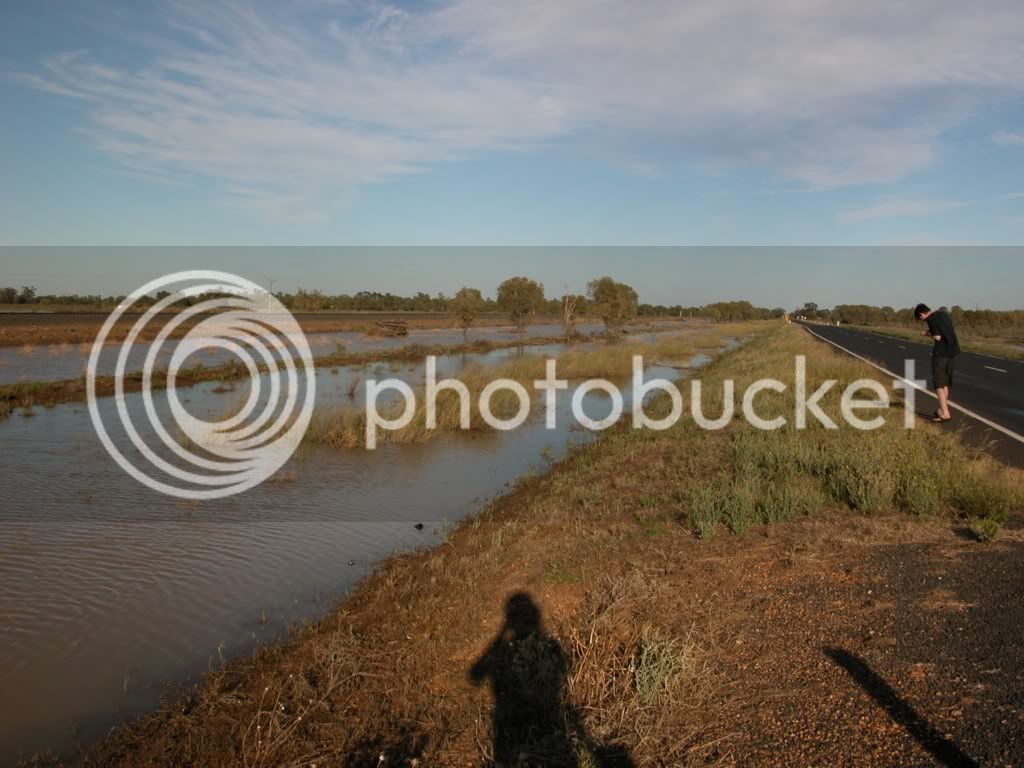
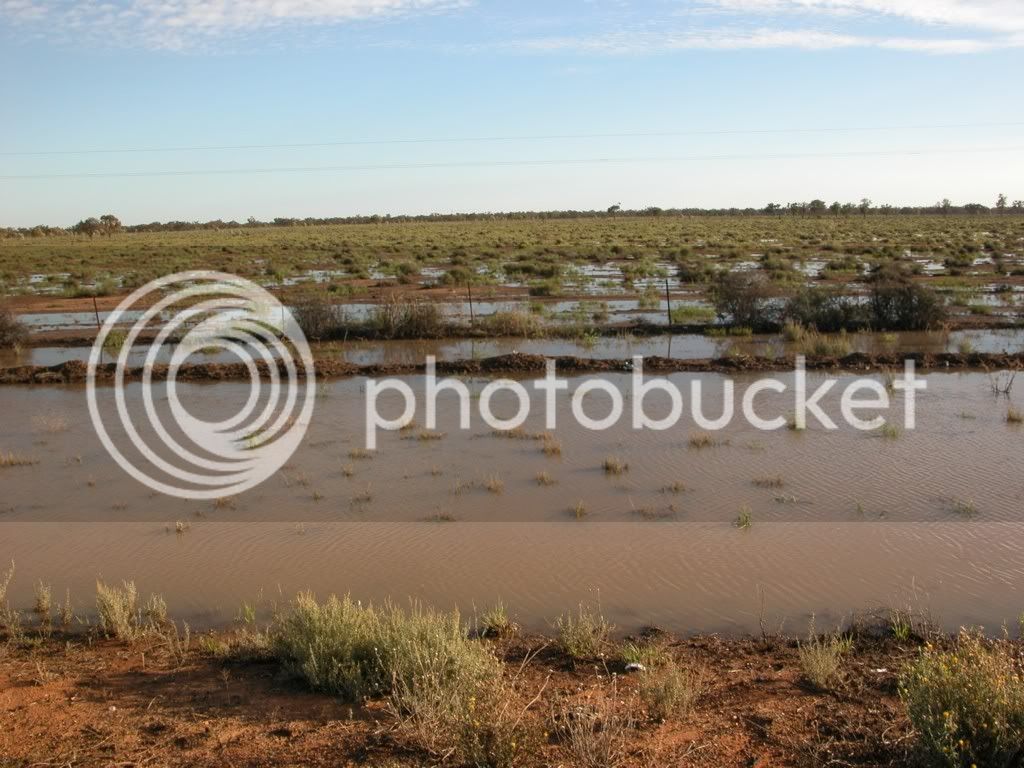
When we arrived the Bogan River was right up at the edge of the banks.
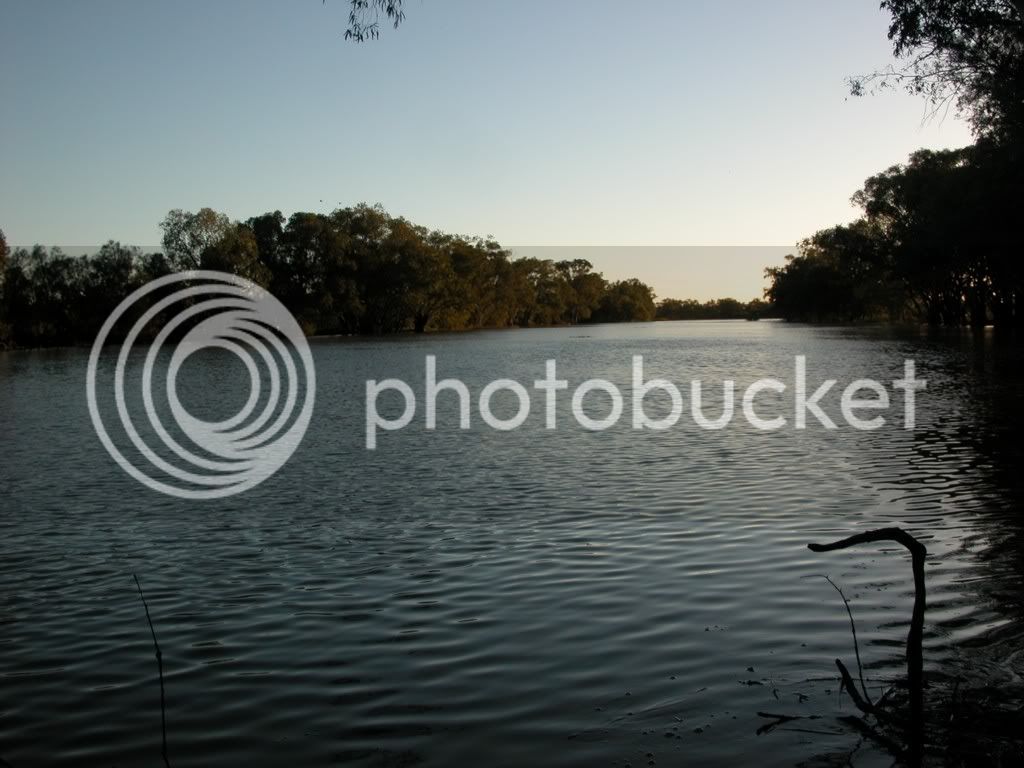
One of the first species we found was the fairly unmistakable Green Tree Frog Litoria caerulea. They were calling from any hollow available. Calling from the ground were large numbers of Desert Tree Frogs Litoria rubellla
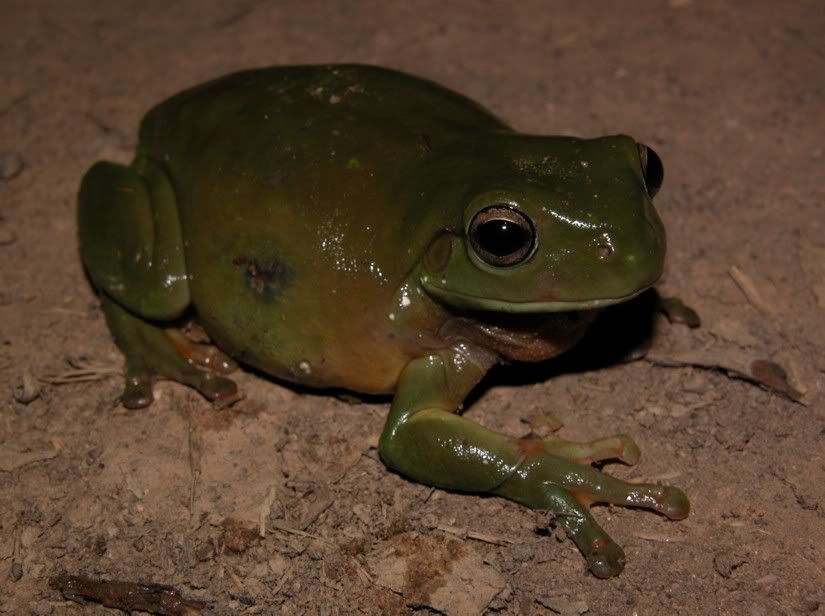
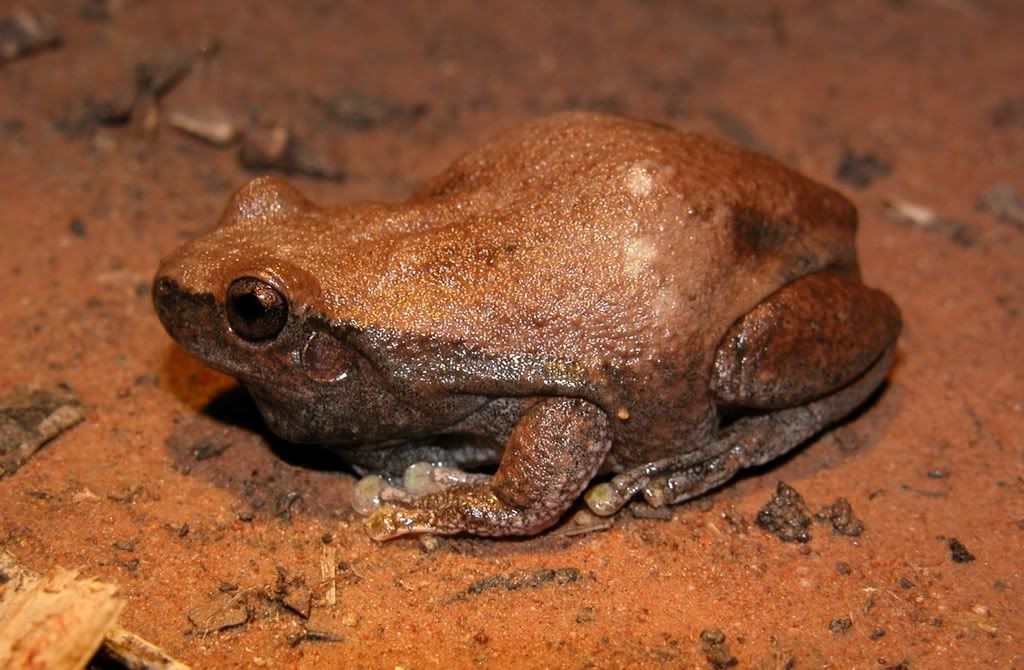
Another species that was calling from around teh flooded areas was the Rugose Toadlat Uperolia rugosa.
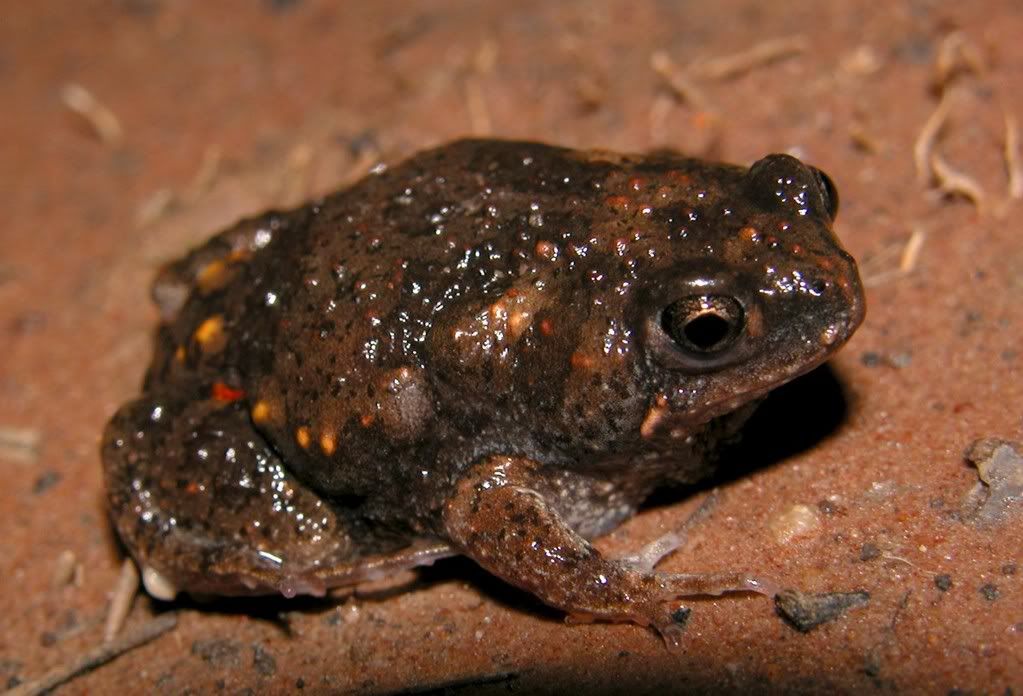
The Barking Marsh Frog Limnodynastes fletcheri looks superficially similar to Limnodynastes tasmaniensis but is much bulkier with a different call. These were also common around inundated grass areas.
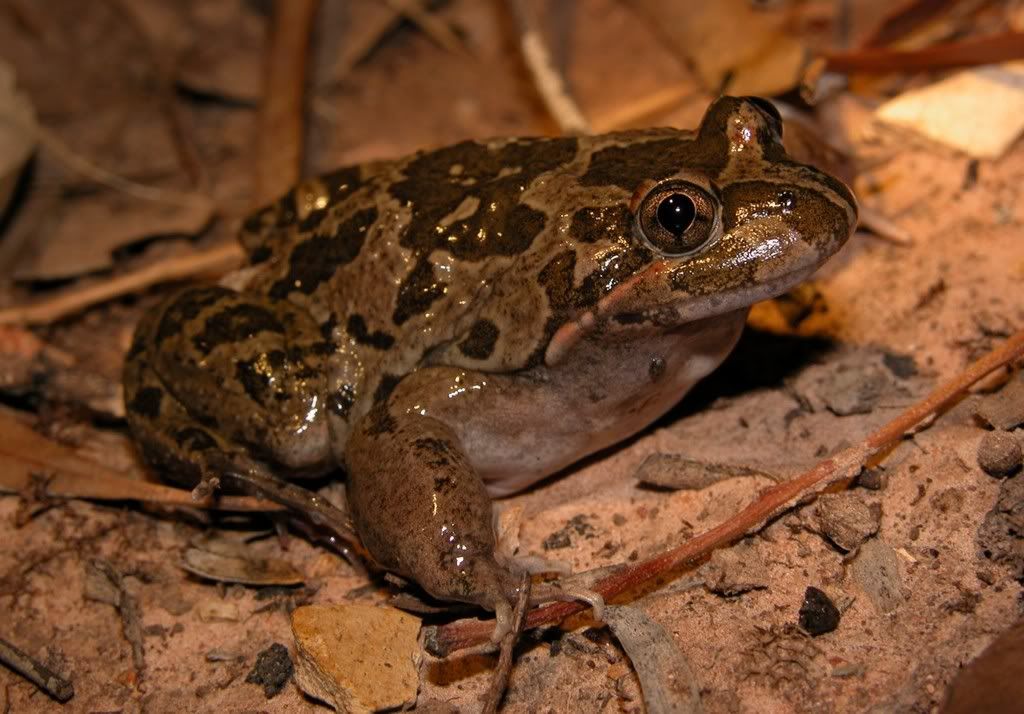
The common Crinia species out around Nyngan is Crinia parasignifera. These are tiny (like most crinia) and are everywhere.
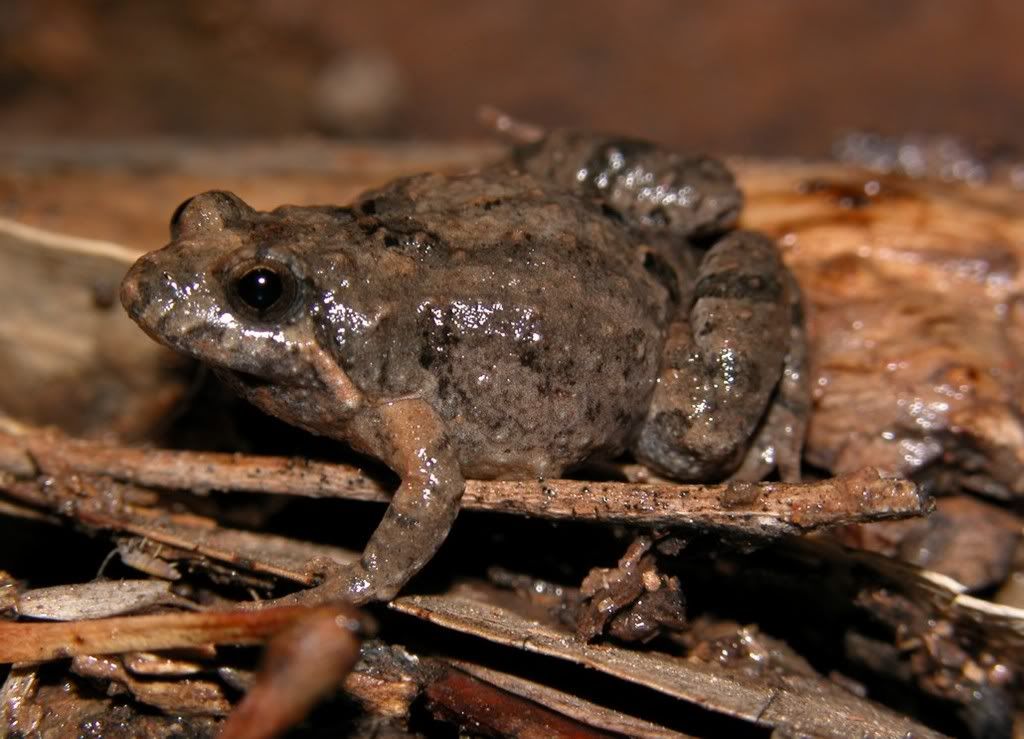
The best finds of the trip were the waterholding species. The most common of which was Neobatrachus sudelli. They were found all over the roads when driving from site to site at night, and often seen and heard calling from the water.

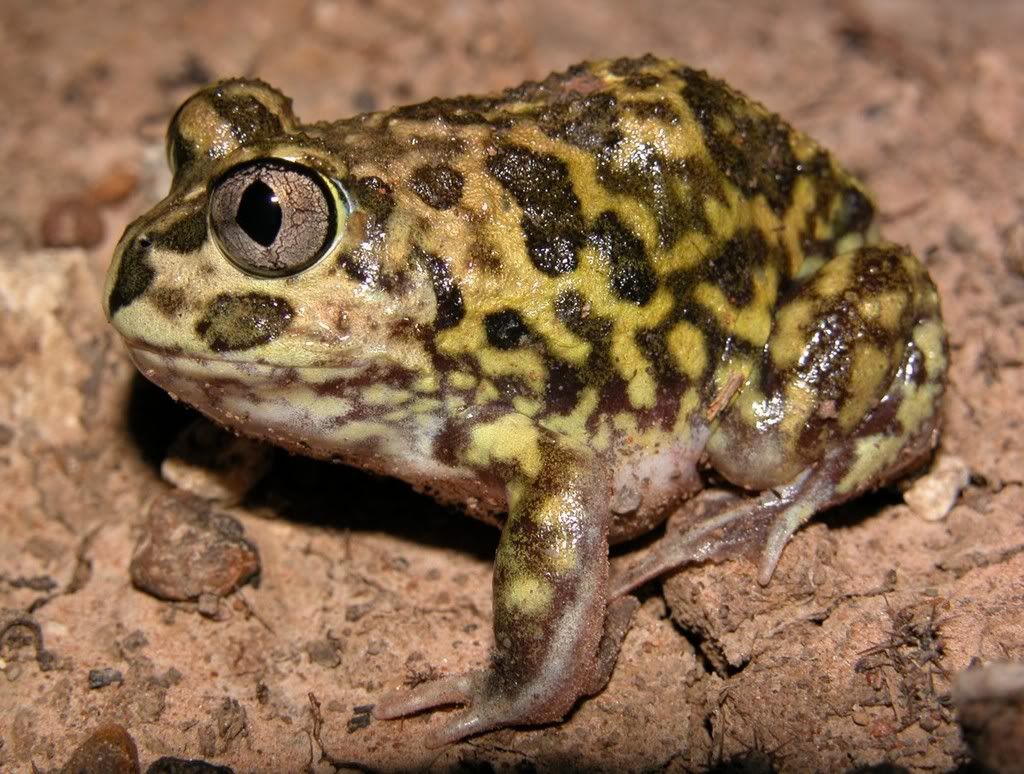
Another spectacular species we found was Cyclorana verrucosa. We found this specimen in the middle of the road. We didn't find any calling from the water.
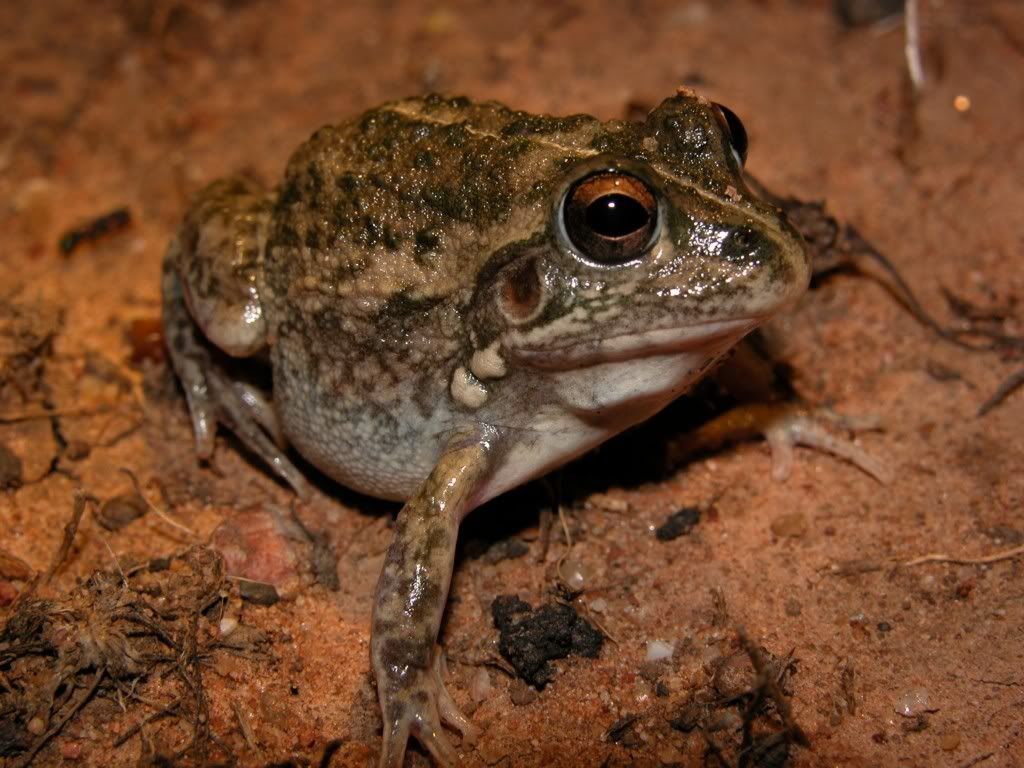
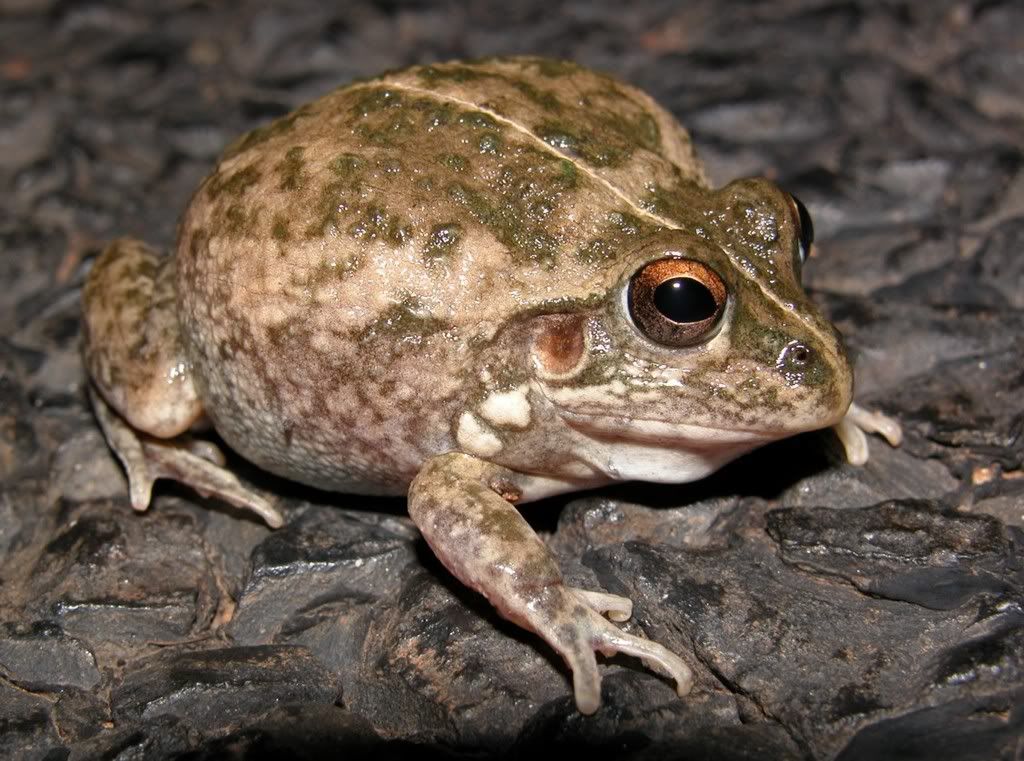
The best known burrowing frog is the "Water holding frog" or Cyclorana platycephala that has mastered the art of staying underground for long periods. Apparently they only come out of the ground after very heavy rain. A really amazing looking frog. Glad we found this one!
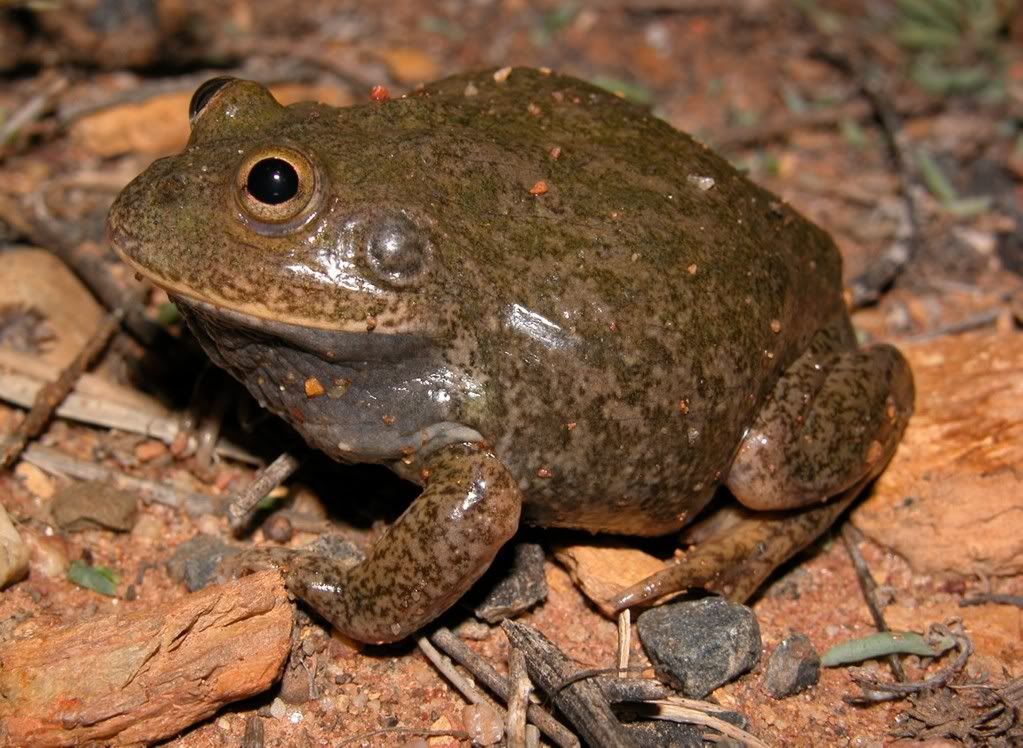
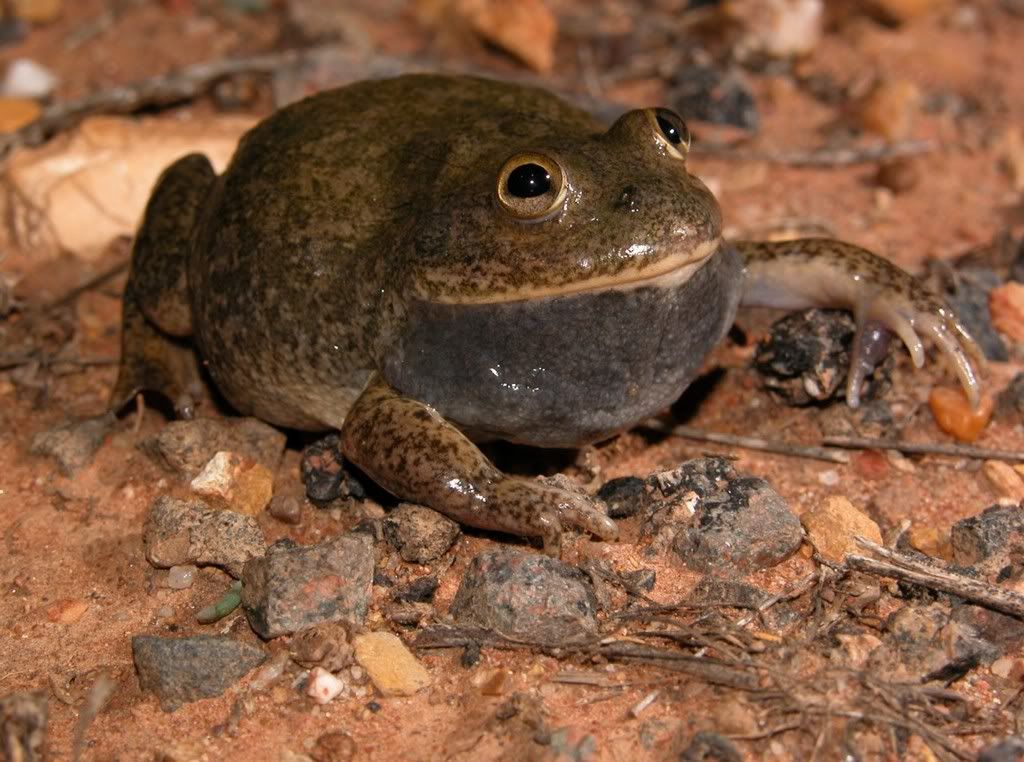
The other spectacular species we found is Notoden bennetti, better known as the Southern Holy Cross Frog.
It looks like Jabba-the-hut crossed with a piece of Aboriginal dot painting.
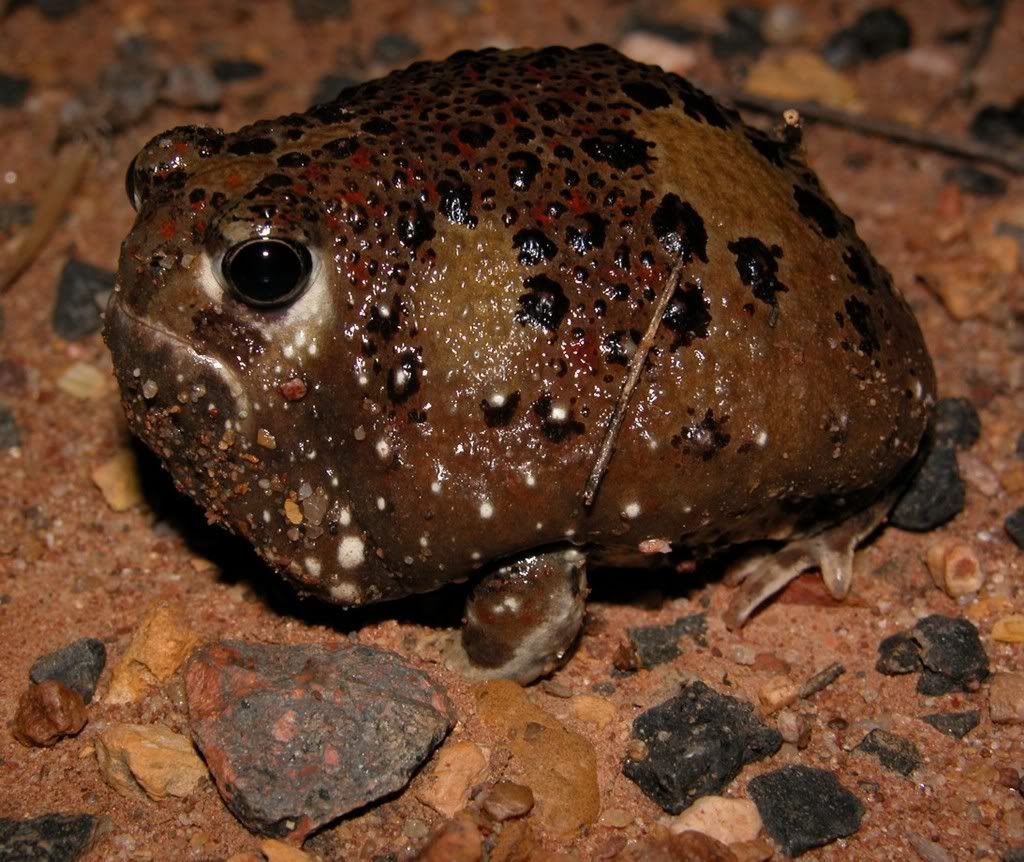
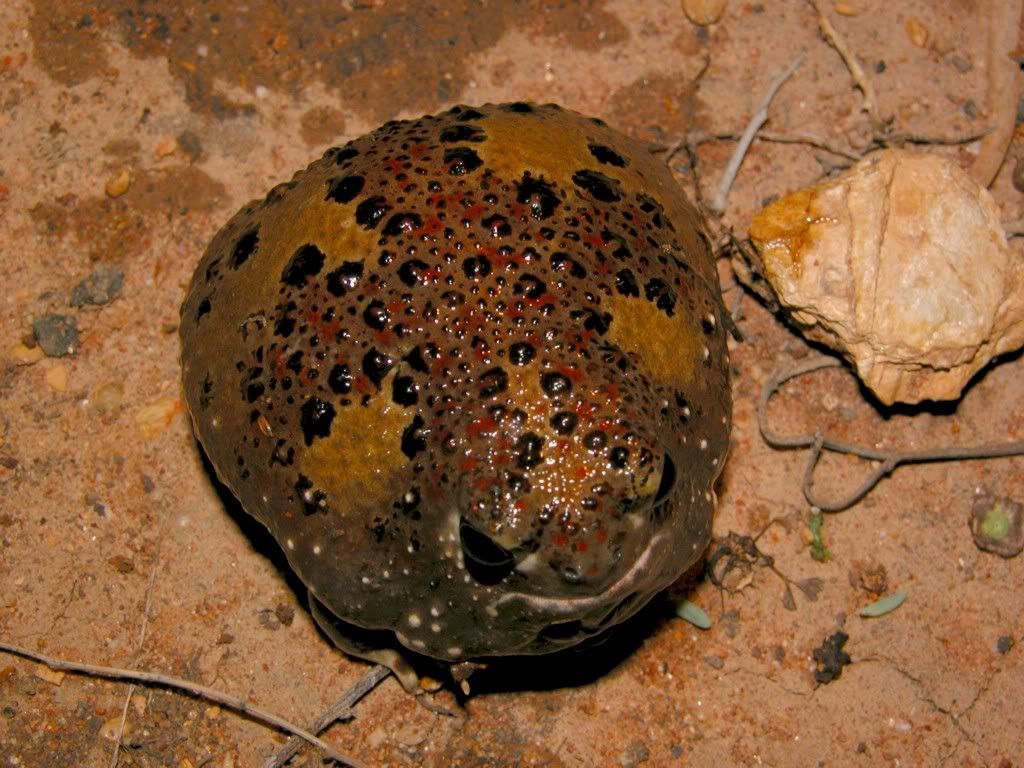
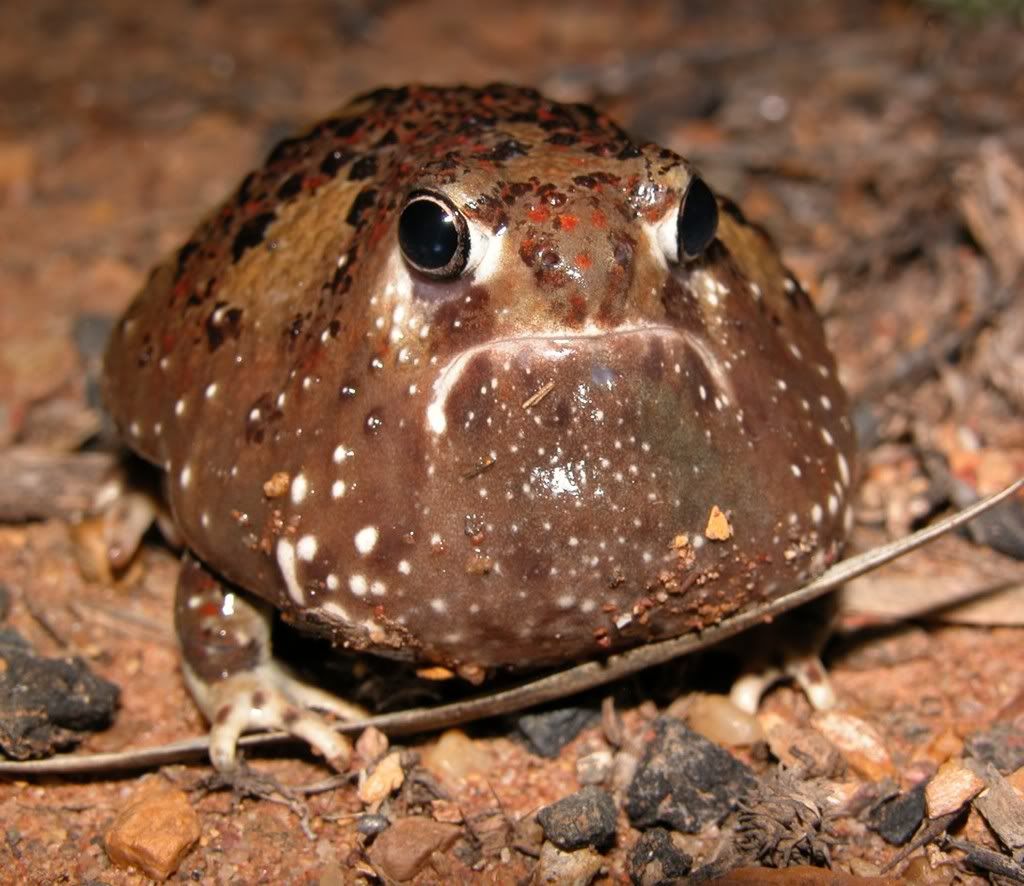
A great trip. Western NSW is a great place to visit! We didnt' get a few species, but I think next time we'll have to head out towards Macquarie Marshes for species like Lim. salmini and Lim. interioris. Possibly spend longer up there and spend a day searching for permanent water holes as well.
All the best,
-H
Yesterday we made a fairly disorganised spur-of-the-moment trip to Nyngan to check out the areas affected by heavy rainfall and floods. Of course, this is the first really heavy rains the region has experienced in about 7 years. It was a forgone conclusion that we were going to get frogs... The only question was which type, and how many!
When we were approaching Nyngan there were promising pools of water between the train tracks and the road. Many of the neighbouring paddocks were flodded as well.


When we arrived the Bogan River was right up at the edge of the banks.

One of the first species we found was the fairly unmistakable Green Tree Frog Litoria caerulea. They were calling from any hollow available. Calling from the ground were large numbers of Desert Tree Frogs Litoria rubellla


Another species that was calling from around teh flooded areas was the Rugose Toadlat Uperolia rugosa.

The Barking Marsh Frog Limnodynastes fletcheri looks superficially similar to Limnodynastes tasmaniensis but is much bulkier with a different call. These were also common around inundated grass areas.

The common Crinia species out around Nyngan is Crinia parasignifera. These are tiny (like most crinia) and are everywhere.

The best finds of the trip were the waterholding species. The most common of which was Neobatrachus sudelli. They were found all over the roads when driving from site to site at night, and often seen and heard calling from the water.


Another spectacular species we found was Cyclorana verrucosa. We found this specimen in the middle of the road. We didn't find any calling from the water.


The best known burrowing frog is the "Water holding frog" or Cyclorana platycephala that has mastered the art of staying underground for long periods. Apparently they only come out of the ground after very heavy rain. A really amazing looking frog. Glad we found this one!


The other spectacular species we found is Notoden bennetti, better known as the Southern Holy Cross Frog.
It looks like Jabba-the-hut crossed with a piece of Aboriginal dot painting.



A great trip. Western NSW is a great place to visit! We didnt' get a few species, but I think next time we'll have to head out towards Macquarie Marshes for species like Lim. salmini and Lim. interioris. Possibly spend longer up there and spend a day searching for permanent water holes as well.
All the best,
-H



